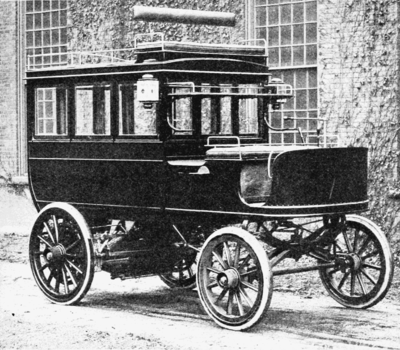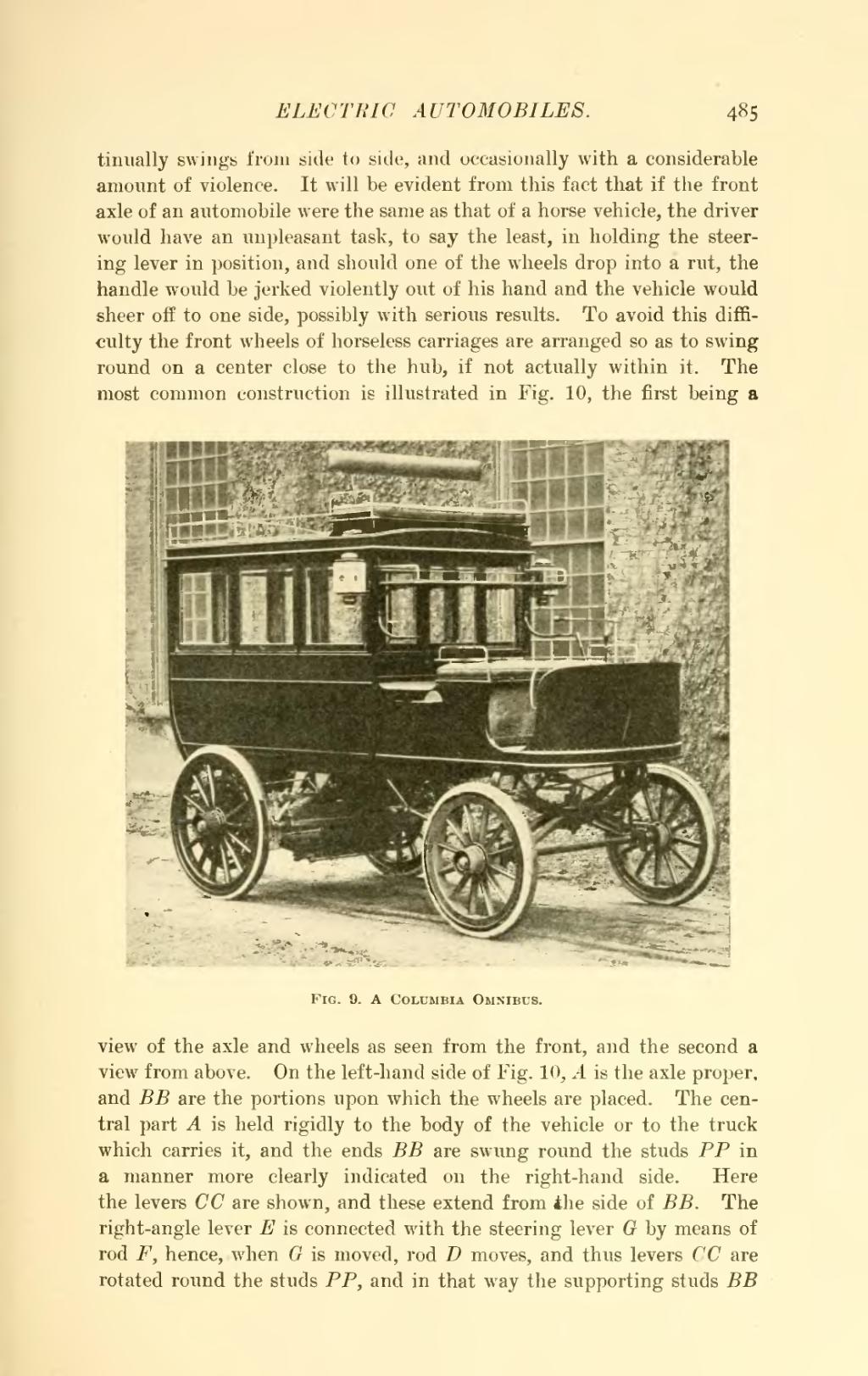tinually swings from side to side, and occasionally with a considerable amount of violence. It will be evident from this fact that if the front axle of an automobile were the same as that of a horse vehicle, the driver would have an unpleasant task, to say the least, in holding the steering lever in position, and should one of the wheels drop into a rut, the handle would be jerked violently out of his hand and the vehicle would sheer off to one side, possibly with serious results. To avoid this difficulty the front wheels of horseless carriages are arranged so as to swing round on a center close to the hub, if not actually within it. The most common construction is illustrated in Fig. 10, the first being a

Fig. 9. A Columbia Omnibus.
view of the axle and wheels as seen from the front, and the second a view from above. On the left-hand side of Fig. 10, A is the axle proper, and BB are the portions upon which the wheels are placed. The central part A is held rigidly to the body of the vehicle or to the truck which carries it, and the ends BB are swung round the studs PP in a manner more clearly indicated on the right-hand side. Here the levers CC are shown, and these extend from the side of BB. The right-angle lever E is connected with the steering lever G by means of rod F, hence, when G is moved, rod D moves, and thus levers CC are rotated round the studs PP, and in that way the supporting studs BB

